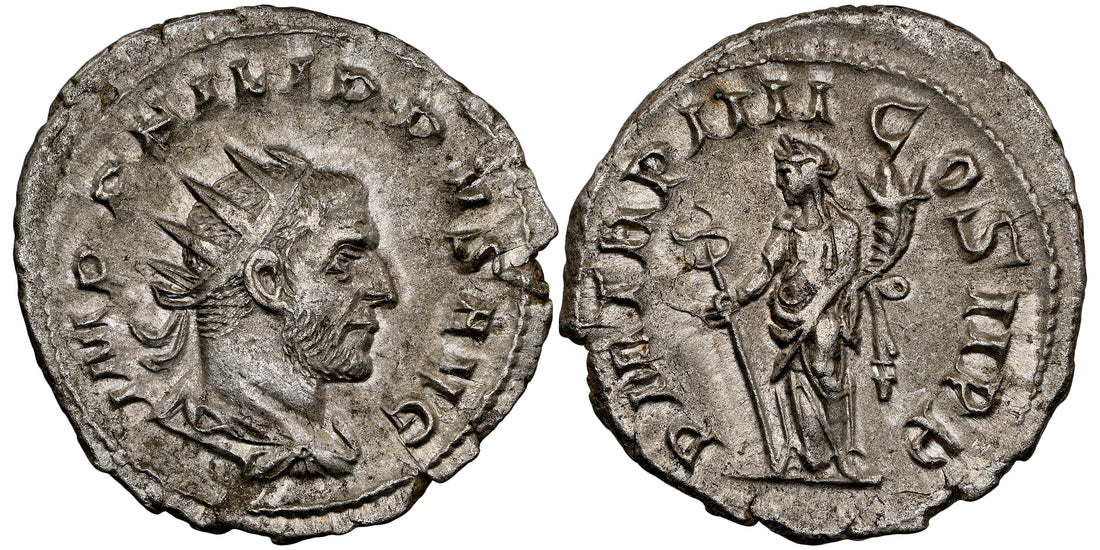After having sold tens of thousands of ancient coins, I've realized that many potential ancients collectors wonder what the best series or type of coin might be good for entering that realm of coin collecting on a budget. In reflecting on the question, coins of the Roman Empire, particularly the third and fourth centuries, immediately spring to mind. It was a time in which the Roman Empire was embattled in a range of issues, particularly around weak, ineffective, and tumultuous leadership - that all resulted in one big issue. That issue was a boon for coin collectors. It was inflation.
Caracalla, after killing his brother Geta to assume the throne as sole ruler around 211 AD, enacted a monetary reform at the beginning of 215 BC. Instead of solely issuing silver "denarius" coins, which were the common silver unit and had been around for centuries, he started striking "antoniniani", or "double-denarii", with the face value of two denarii. Of course, they never contained more than around 1.5 times the silver content of a denarius, leading to short term profits for the government and the expansion of the money supply.
Not long later, during the rule of Gordian III (in power 238-244 AD), the antoninianus completely replaced the denarius. Philip "the Arab" took over the throne after the Sasanian forces killed him during a decisive victory, leading to Philip buying peace for 500,000 dinars. His rule saw relatively silver antoniniani struck, such as the one in our photo, but the inflation had set in.
Of note, Philip is speculated to have been the first Christian emperor, described as such in several ancient and medieval history books, but other historians question the veracity of that claim. He was born in today's Syria, became a Praetorian prefect in 243 AD, and after Gordian III's death (which some think he murdered Gordian III), ascended. He sought peace with Shapur (the Sasanian king), gave up Armenia, and focused on good relations with the Senate. A range of usurpers and portions of the empire revolted, and Trajan Decius, as senator, supported him ardently after he offered to resign. Decius was dispatched to quell one of the rebellions, but Decius was then proclaimed emperor by his sphere of influence, and marched on Rome - which was debasing the antoninianus rapidly - and died (or was assassinated) in a battle near Verona.
His antoniniani are some of the last good silver antoniniani, and can be found in more circulated conditions for as low as around $40. Other emperors with decent silver antoniniani are of course Gordian III before him and certain issues of Trajan Decius, Otacilia Severa (his empress), some Gallienus (especially German minted ones), Trebonianus Gallus, Herennius Etruscus, and a few others. As the coin rapidly was debased over the next 20-50 years, the surviving examples become much cheaper, and could be wise for collectors to look into. Regardless, hopefully this brief history segment is beneficial to your knowledge of the mid-3rd century AD in Rome, and I look forward to releasing further coin spotlights in the future.

